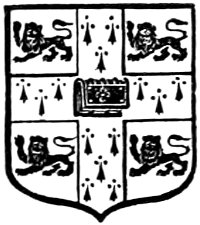
THE
TEMPLES AND RITUAL
OF ASKLEPIOS
AT EPIDAUROS AND ATHENS
TWO LECTURES DELIVERED AT THE ROYAL INSTITUTION OF GREAT BRITAIN
BY
RICHARD CATON, M.D., F.R.C.P.
HON. PHYSICIAN LIVERPOOL ROYAL INFIRMARY
EMERITUS PROFESSOR OF PHYSIOLOGY, UNIVERSITY COLLEGE, LIVERPOOL
WITH THIRTY FOUR ILLUSTRATIONS
SECOND EDITION
PRINTED AT THE UNIVERSITY PRESS OF LIVERPOOL
LONDON: C. J. CLAY AND SONS
CAMBRIDGE UNIVERSITY PRESS WAREHOUSE, AVE MARIA LANE
1900
LONDON:
C. J. CLAY AND SONS
CAMBRIDGE UNIVERSITY PRESS WAREHOUSE, AVE MARIA LANE
GLASGOW: 50, Wellington Street

LEIPZIG: F. A. Brockhaus
NEW YORK: The Macmillan Company
BOMBAY: E. Seymour Hale
PREFACE
Some apology is perhaps needed from one who can neitherclaim to be a classical scholar nor a professional archæologistin venturing upon the subject of these lectures.
Repeated visits to Greece and the Greek coloniesduring the past twenty years have enabled the author toobserve, in their various stages, certain of the researchesto be here briefly recounted. To him their interest appearedso considerable that it seemed probable the enquiry mightbe attractive to members of the medical profession generally,and perhaps also to other readers, from the side of thecult, if not from that of the classical archæologist.
The same motive explains the effort made to present apicture, in part hypothetical, of the ancient fabrics, and ofthe work carried on in them. More latitude in speculationin such a direction is perhaps allowable to one who tracesthe development of a cult, than to the scientific archæologist.
No originality is claimed in regard to the facts. Someof the sketches and restorations are original, and so arevarious theories or suggested explanations, such as thatregarding the purpose of the Tholos and the Circular Pitat the Asklepieion; the suggestion that the Square Buildingwas a Prytaneion, where sacrificial banquets were held andiithe perpetual fire maintained; the theory that certain of thebuildings were hostels; the conjecture regarding the selectionof sites for Greek Theatres, &c. Whether these are well-foundedor otherwise only time and further research candecide.
The author desires to record his thanks to the learnedOxford friend who edited and translated the inscription onpage 42, and who kindly pointed out various errors in thefirst issue, also to Mr. Sampson, the librarian of UniversityCollege, Liverpool, for his highly valued advice and for hiskindness in reading the proofs of the present edition.